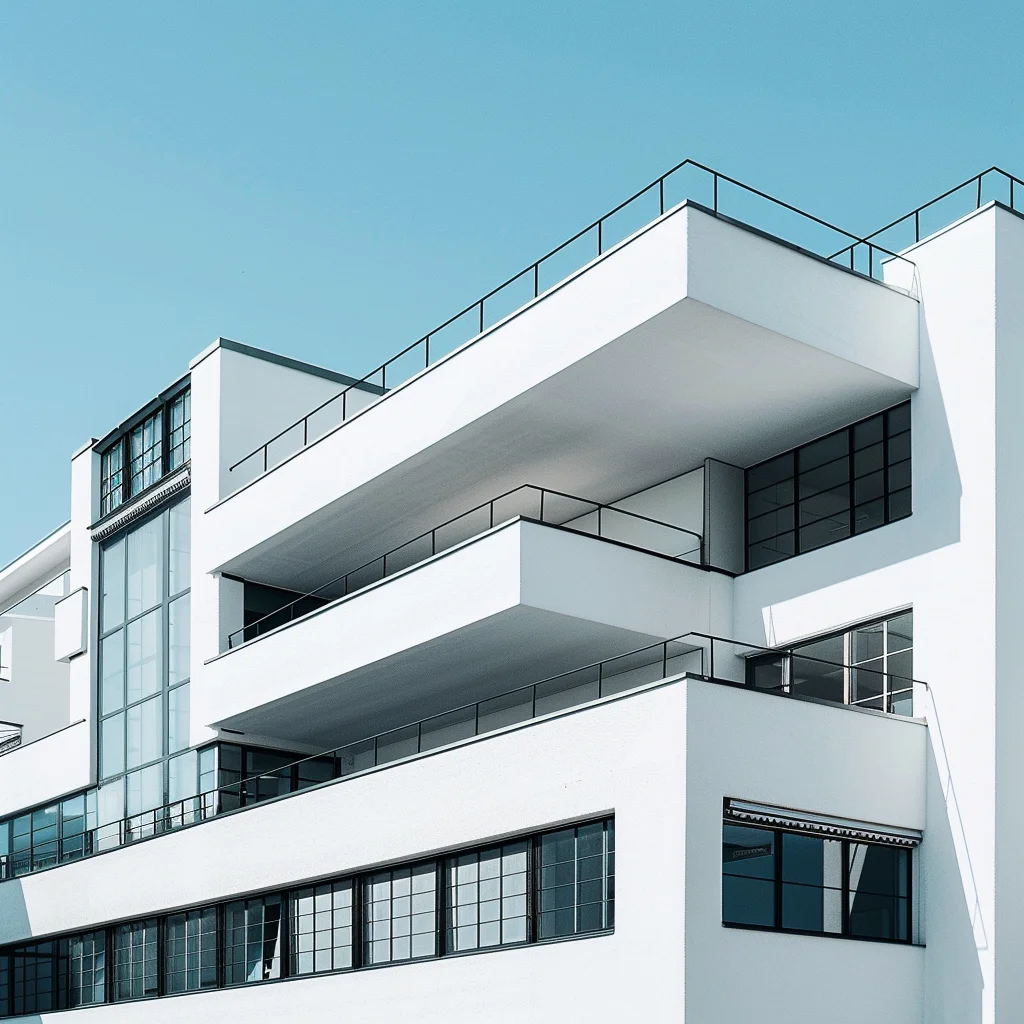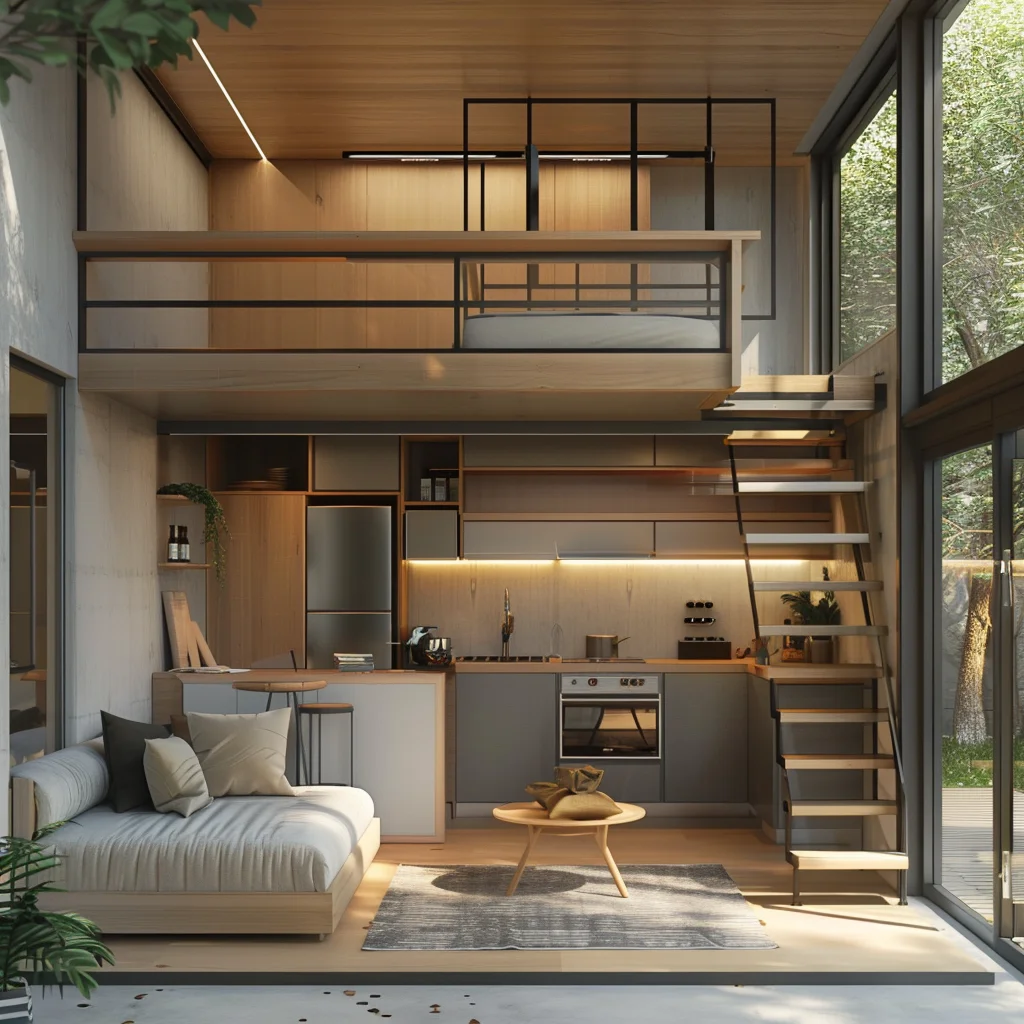Introduction
Architecture is a dynamic field that continuously evolves, reflecting changes in technology, culture, and societal needs. Modern architecture, in particular, has undergone significant transformations over the past century, moving from the revolutionary ideas of the Bauhaus movement to the current focus on sustainability. In this post, we explore the key milestones in the evolution of modern architecture and how these developments have shaped the built environment we live in today.
The Bauhaus Movement: Function Meets Form
The Bauhaus school, founded by Walter Gropius in Germany in 1919, was a pivotal moment in the history of modern architecture. The Bauhaus philosophy emphasized the unity of art, craft, and technology, advocating for functional design that was free from unnecessary ornamentation.
- Key Principles: The Bauhaus movement championed simplicity, functionalism, and the use of modern materials like steel, glass, and concrete. The idea was to create buildings that were not only aesthetically pleasing but also practical and efficient.
- Impact: Bauhaus principles influenced numerous architects and led to the development of iconic structures characterized by clean lines, flat roofs, and open floor plans. The movement’s legacy is seen in the widespread adoption of minimalist design in both residential and commercial architecture.
Mid-Century Modern: Embracing Innovation
Following the Bauhaus era, mid-century modern architecture emerged in the mid-20th century, bringing with it a renewed emphasis on simplicity and integration with nature.
- Key Features: Mid-century modern architecture is known for its large windows, open spaces, and seamless connection between indoor and outdoor areas. The use of new materials and technologies, such as steel frames and prefabricated components, allowed for innovative structural designs.
- Influence: Architects like Frank Lloyd Wright and Richard Neutra were prominent figures in this movement, creating homes and public buildings that harmonized with their surroundings. The influence of mid-century modern design is evident in the timeless appeal of its aesthetic, which remains popular today.
Brutalism: Bold and Uncompromising
In the post-war period, Brutalism emerged as a stark contrast to the light and airy designs of the mid-century modern era. This architectural style focused on raw, rugged materials and a sense of monumentalism.
- Characteristics: Brutalism is characterized by its use of exposed concrete, geometric forms, and a focus on function over form. Buildings often have a fortress-like appearance, with rough textures and stark, imposing facades.
- Legacy: While Brutalism has been both praised and criticized, its influence is undeniable. The style’s bold, uncompromising nature has inspired a new appreciation for its aesthetic, leading to a resurgence of interest in Brutalist buildings.
High-Tech Architecture: Celebrating Technology
The 1970s and 1980s saw the rise of high-tech architecture, which celebrated technological advancements and industrial materials.
- Defining Elements: High-tech architecture emphasizes structural expressionism, with buildings often featuring exposed steel frameworks, glass walls, and visible mechanical systems. The style highlights the building’s technical components as part of its aesthetic.
- Notable Examples: Iconic structures like the Centre Pompidou in Paris and the Lloyd’s Building in London exemplify high-tech architecture. These buildings showcase the potential of new materials and construction techniques, pushing the boundaries of architectural design.
Sustainable Design: Building for the Future
In recent years, the focus of modern architecture has shifted towards sustainability. As environmental concerns grow, architects are increasingly prioritizing eco-friendly designs that minimize environmental impact and promote well-being.
- Sustainable Practices: Sustainable architecture incorporates energy-efficient technologies, renewable materials, and green building practices. This includes the use of solar panels, rainwater harvesting systems, and green roofs.
- Biophilic Design: Integrating nature into architecture is a key aspect of sustainable design. Biophilic design principles emphasize natural light, ventilation, and the inclusion of plants to enhance the connection between occupants and the natural environment.
- Global Impact: The move towards sustainable design is a global trend, with architects worldwide seeking to create buildings that are not only beautiful but also environmentally responsible. This shift is essential for addressing climate change and ensuring a sustainable future.
Conclusion
The evolution of modern architecture from the Bauhaus movement to sustainable design highlights the field’s capacity for innovation and adaptation. Each era brought new ideas and technologies that transformed the way we build and live. Today, the focus on sustainability reflects a broader commitment to creating spaces that are not only functional and aesthetically pleasing but also environmentally responsible.
For more insights into the latest trends in architecture and sustainable design, visit our blog regularly. Our team of experts is dedicated to exploring the cutting-edge developments in the field and sharing valuable knowledge with our readers. Whether you’re a professional architect or simply passionate about design, we’re here to inspire and inform.





